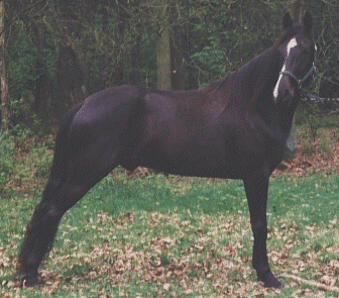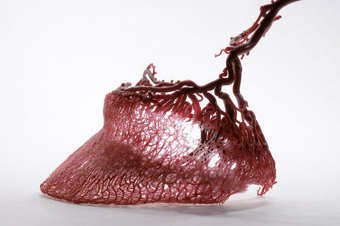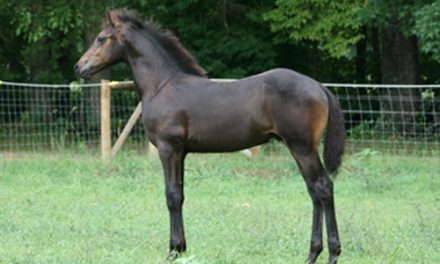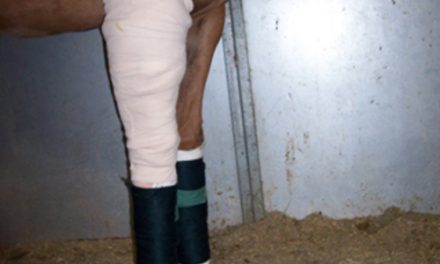THE WAY OF HORSES

Controlling roundworms (Parascaris spp./ascarids) has been an on-going challenge for horse breeders.
The 1916 United States Department of Agriculture book “Diseases of the Horse” describes how the roundworm affects the growth and health of horses – unthriftiness, diarrhea or constipation, colic and respiratory problems. Recommended treatment compounds were tartar emetic, turpentine or carbon bisulphid for the removal of the parasite. Foals were treated with a mixture of the chemical of choice and honey which was placed on the back of the tongue twice a week. Older horses were fasted for 18 hours and then administered the poison with a stomach tube. The toxic chemicals basically caused severe diarrhea and purged the intestinal tract. The book warns that the treatments are dangerous to the horse and can cause death or permanent injury to the kidneys or other organs.
Roundworms are primarily a young horse’s nemesis. The newborn foal is free from parasites, but it doesn’t take long for the youngster to be exposed.
Ascarid eggs can live for years in pastures and turnouts on plants, buckets, fences and stall walls – just waiting for the exploring foal to find and swallow. The eggs can also become stuck to the mare’s udder and swallowed when the foal nurses.
The eggs travel to the small intestine where they hatch. After hatching, the larvae work through the intestinal wall into the blood stream, reaching the liver and eventually ending up in the lungs. The larvae are coughed up, swallowed and return to the small intestine where they complete their lifecycle – maturing into adult egg-laying worms. The new eggs are passed out of the horse in the manure where they wait to be ingested by the next horse. It is estimated the eggs can live for close to 10 years in a suitable environment. Extreme heat and cold does not effectively kill the eggs, which are encased in a hard protective capsule.
As the 1916 book stated roundworms can cause poor growth, coughing, nasal discharge, inflammation and colic. But foal owners must realize that youngsters without symptoms will still have roundworms. Total eradication of roundworms in the environment is impossible.
Over the last 100 years our choice of chemicals and administration has improved but the effectiveness of our modern dewormers is decreasing.
A study done in September 2002 on a farm in Ontario, Canada showed that foals which had been regularly dewormed with ivermectin since birth had poor roundworm control – they were resistant to ivermectin. [Patrick D Hearn, F & Peregrine, Andrew. (2003). Identification of foals infected with Parascaris equorum apparently resistant to ivermectin. Journal of the American Veterinary Medical Association. 223. 482-5, 455. 10.2460/javma.2003.223.482.]
To prevent resistance to dewormers the American Association of Equine Practitioneers recommends for foals and weanlings: “During the first year of life foals should receive a minimum of four anthelmintic treatments. First deworming should be carried out at about 2-3 months of age, and a benzimidazole drug is recommended to ensure efficacy against ascarids. Second deworming is recommended just before weaning (approximately 4-6 months of age). An extra treatment can be justified before weaning if the time period between the two treatments exceeds 3 months. At weaning a fecal egg count is recommended to determine whether worm burdens are primarily strongyles or ascarids, to facilitate the right choice of drug class. Third and fourth treatments should be considered at about 9 and 12 months of age, respectively, and treatment should primarily be targeting strongyles. Tapeworm treatment should be included in the 9-month treatment.” https://aaep.org/sites/default/files/Guidelines/AAEPParasiteControlGuidelines_0.pdf
Dewormers are ineffective on roundworms until the parasites become adults, so deworming foals before the age of 2 months is not advised. Deworming foals at an early age sets up resistance – resulting in dewormers being ineffective later when they can be of use.
Care must be taken when administering the first dose of dewormer. If the foal has a large worm burden the sudden die-off of adult worms can cause a blockage, resulting in impaction colic. It should be done under the supervision of a veterinarian.
By the time the young horse is two years old resistance to roundworms has developed. Occasionally adult horses will have a low roundworm burden.
In 1916 managing manure was the key to keeping the exposure down. The book recommended stalls and pastures be cleaned daily and the manure not spread on paddocks where mares and foals were kept. Feed was to be offered off the ground.
This is true today – management is key. Overstocking pastures and turnout areas should be avoided. Isolation of new horses with dubious health history should be implemented until a fecal count can be taken and treatment completed before introduction to the herd. Manure removal and pasture rotation can also help in managing internal parasites.
It is impossible to totally remove the risk of exposure to roundworms, but it can be decreased. * Earn Professional Certification as Horse Trainer, Stable Manager or Riding Instructor. All courses are online. Visit www.equinestudiesinstitute.org




